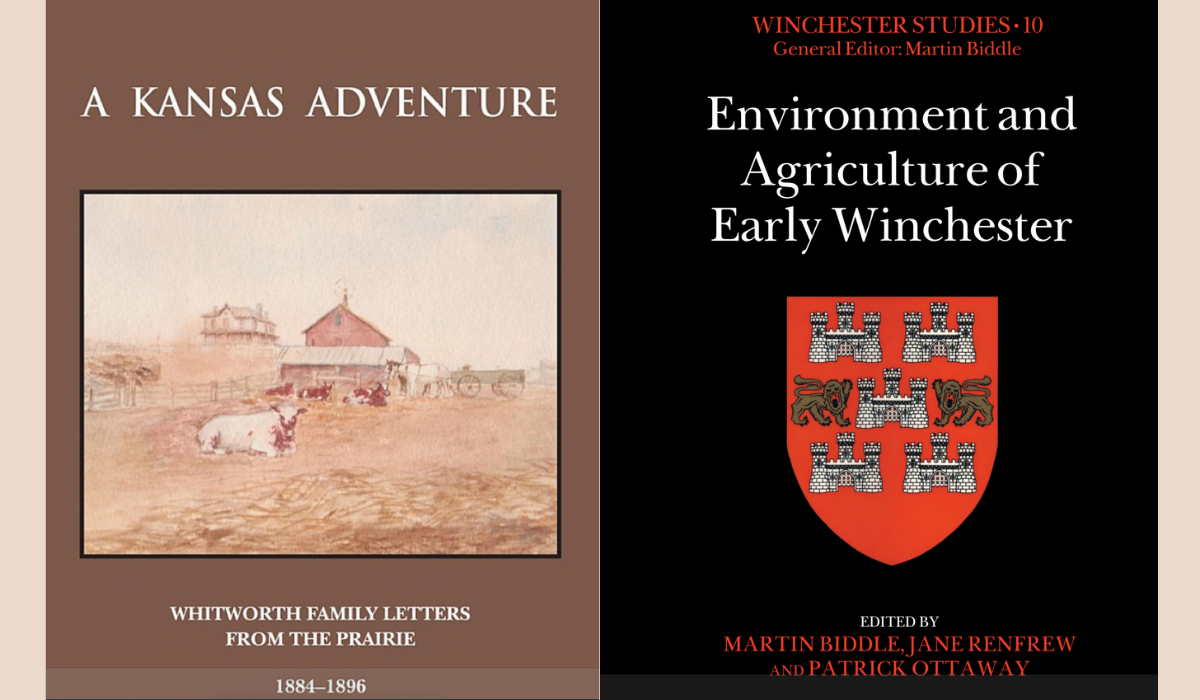Lucy Cavendish Emeritus Fellow, Dr Renfrew, reveals her fascinating and diverse writing journey.
I have a great curiosity about a wide range of subjects and a need to research further into them. A list of my main publications gives some idea of my interests. My first publication (1959) was a short monograph, written when I was at school, on the Revd William Carus Wilson, the School's founder, who appears in Charlotte Bronte's Jane Eyre as a black marble clergyman. This was followed in 1963 by Antiquary on Horseback based on unpublished 17th-century manuscript notes on the history and antiquities of the Barony of Kendal, an area of the southern Lake District where I lived, published whilst I was an undergraduate. My PhD thesis on the identification of seeds found in archaeological excavations was published as Palaeoethnobotany in 1973. This was followed by First Aid for Seeds (1976) with my students Mick Monk and Peter Murphy, two booklets for English Heritage on Food and Cooking in Prehistoric Britain and Food and Cooking in Roman Britain (1985) and New Light on Early Farming, Recent Developments in Palaeoethnobotany (1991). In 1996, together with my younger son, Magnus and a friend and neighbour Dr John Rose we published Rus in Urbe, Chaucer Road and Latham Road, the History of two Rural Roads in Cambridge. Apart from a long list of seed reports from various sites in Greece, the Balkans, Egypt and Turkey, I have written articles about 17th century Fellows of Jesus College who came from Cumbria.
The recent publication of A Kansas Adventure, Whitworth family letters from the Prairie 1884-1896, arose from my interest in family history in the 19th century. As a child, I had heard that my maternal great grandparents had emigrated to America, but it wasn't till years later when bundles of letters turned up in the attics of various family members that I was able to put them together and reconstruct this unexpected chapter of family history. These letters home give a fresh and graphic account of the ups and downs of settling and farming in the MidWest. Despite major setbacks such as the destruction of their house and its contents by fire shortly after their arrival, they were determined to make a success of their brave venture. It was personal tragedies, not external circumstances which brought this episode to an abrupt end. It was published by Grosvenor House Publishing last November as a paperback well illustrated with contemporary photographs, documents, drawings, maps and plans, and a Foreword by the late Senator Bob Dole, Senator for Kansas.
My most recent book as joint editor with Martin Biddle and Patrick Ottaway was published in March this year, is Winchester Studies volume X. Environment and Agriculture of Early Winchester. It is a wide-ranging study of the historical and archaeological evidence for the role of cultivated and wild plants in the life of the city from the Iron Age to the Medieval period. It covers local wild and cultivated plants, and in the later periods exotic imported plants, in the diet of the citizens. It also includes fodder and bedding for animals. It is based on pollen analysis, seed identification, and studies of wood, mosses, and beetles found in the excavations which took place from 1961 to 1976 in various parts of the city. Historic records such as Aelfric's Nominem Herbarium of the 10th century and medieval records of gardens, mills and markets in the town and the produce of the wide range of manors belonging to it throw further light on the uses of plants in the early city.
About Dr Renfrew
Dr Jane Renfrew, MA PhD FSA FSA (Scot), is an Emeritus Fellow of Lucy Cavendish College, University of Cambridge, UK. She is a retired prehistorian and paleoethnobotanist and also has a strong interest in the history of her nineteenth-century ancestors.
She was a trustee of the Royal Botanic Gardens at Kew and Wakehurst Place, a Syndic of the University Botanic Garden in Cambridge, and Garden Steward at Lucy Cavendish College. Her textbook, Palaeoethnobotany: The Prehistoric Food Plants of the Near East and Europe (1973), was one of the earliest in a field that has become recognized during the past thirty-five years as an integral part of archaeological investigation. Dr Renfrew's association with Lucy Cavendish College began in 1984, and for three years, she served as Vice President of the College. She also was a College Lecturer in Archaeology, as well a Director of Studies in Archaeology and Anthropology, College Tutor and an affiliated lecturer in Cambridge's Department of Archaeology. For a number of years before her retirement, she was the Fellow Librarian.




